Summer is one of the most annoying times of the year when it comes to insects. From June bugs and mosquitoes to gnats and midgees, bugs seem determined to frustrate you all summer long.
Sweat bees are no exception, and these particular pests can become a literal pain when attracted. Let’s take a look at this complex group of stinging insects so you’ll not only know how to get rid of sweat bees, but also how to keep them from ruining your summer fun.
Sweat Bees: Variations on a Theme
One of the largest classifications of bee, the term “sweat bee” applies to any bee species that follows a few similar traits:
- Attraction to human sweat
- Ground dwellers
- Solitary or small (40 or fewer bees) communes
- Consumes pollen
- Lays eggs in cells filled with pollen instead of actively feeding young
- Tiny sizes ranging from a mere .125 inches to .5 inches, making them fly-sized
Because the term is used to classify common traits, the individual species that make up this group vary greatly in size and coloration. Some have stripes, some have fuzzy bodies, some have a metallic color and resemble flies, and others look like wasps.
Related: Identifying Bees, Wasps, and Hornets
Where Do Sweat Bees Live?
While they prefer more temperate zones, sweat bees can be found in most parts of the world. There are 44 species native to Florida, for example, making it difficult to identify an individual species when encountered. As they are active pollinators, you’re more likely to encounter one in a prairie than a desert, however.
Unlike many better-known species of bee, sweat bees burrow underground, with solitary bees preferring a spot far from any other burrows and eusocial (colonial) species allowing their homes to be closer to other colony burrows. While moving a bee hive is a good, simple solution to get rid of honey bees, that method won’t work with sweat bees.
See Also: Where Do Bumble Bees Live?
What Attracts Sweat Bees?
An important pollinator, sweat bees typically seek out flowers and can be found hanging around gardens and fields. They get their name because of an attraction to the salts found in sweat (which is rarely available from the plants they visit).
When one becomes attracted to you, it’ll fly around looking for a place to land and can be quite the nuisance. Unfortunately, these flies will sting if you try to attack them once they’re on you. The stings can cause severe reactions to individuals with a sting allergy.
Do Sweat Bees Really Sting?
Unlike many other types of bee, sweat bees are typically non-aggressive. When threatened, however, they will sting and can trigger allergies as easily as any other stinging bee. The stinger will remain embedded in your skin, pumping venom, until removed.
Due to the fact that the term “sweat bee” is applied to a wide number of species (over 1,000 in North America alone), it can be impossible to predict whether an individual will have an allergic reaction to a specific bee’s sting or how severe the reaction will be.
Sweat Bees vs Hoverflies
It’s a common misconception to count hoverflies as a species of sweat bee. These critters look a lit like little wasps, but are actually a type of fly. As a result, they don’t sting and are purely beneficial (if sometimes annoying).
Getting Rid of Sweat Bees
Getting rid of sweat bees is often both easier and more difficult than with other pests. Their mostly solitary nature means far less hassle, but their crucial role in the environment means your garden will be a major draw for them. Thankfully, there are plenty of ways to get rid of these pesky critters.
Why Killing Should be Avoided
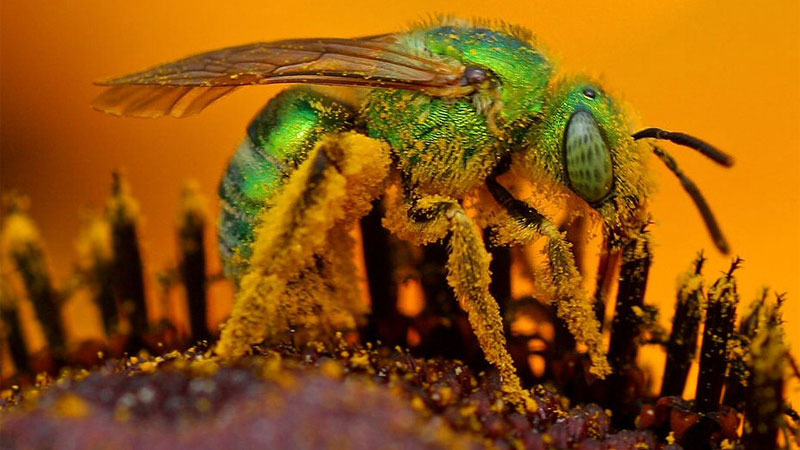
Sweat bees are a major pollinating species, ensuring your garden and flowers thrive. It might be tempting to kill one as soon as you see it, but their benefits far outweigh any risks unless you have a severe allergy. The best option is to simply get them to leave.
That said, there will be some circumstances where you may need to kill a sweat bee. This is especially true when you or a family member has allergies. In these cases, you should focus on natural products which target the bees directly to minimize the chance of harming other beneficial critters.
Creating an Inhospitable Landscape
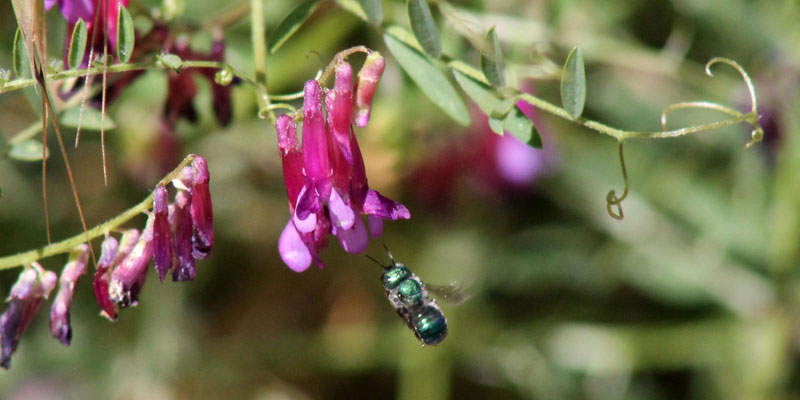
This is perhaps one of the more unusual, yet easiest ways to get rid of a pest. Whereas with most types of pest you want to remove certain plants, debris, or other forms of shelter; sweat bees are the opposite.
These critters prefer to place their burrow in bare earth, so simply eliminating bald patches can sometimes get entire colonies to move. Some of these deterrent options include:
- Add mulch under shrubs or between garden rows.
- Drop landscape fabric so the bees won’t be able to burrow.
- Extend your lawn into the barren area.
- Plant a new garden.
- Plant flowers, which will prevent sweat bee nests but won’t stop them from visiting to pollinate.
- Use a popular ground cover such as baby’s breath or clover.
Luring Sweat Bees Away
This method works for a wide range of sweet-loving insects, but is a more gradual solution. Take a few chunks of mango and put them in an open container. Suspend this where the sweat bees seem to be most active.
Once the bees have identified the container as a source of food (usually a day), move the container several feet away. Repeat this process until the bees have been moved a safe distance away.
So long as you replace the mango occasionally, this lure is cheap and effective against sweat bees, horse flies, stinging insects, and general pests (such as flies) alike.
Using a Sweat Bee Trap
There are a wide range of bee traps available on the market, but most of these are too big for the miniscule sweat bee.
The RESCUE! Trapstik is one of the better options as it’s basically a wasp, carpenter bee, and sweat bee sticky trap. The nice thing about it is that it doesn’t attract beneficial honey bees and has integrated bird guards to prevent birds and bats from getting stuck
Pic’s Yellow Jacket & Wasp Trap has proven a worthy opponent to not only sweat bees, but also fruit flies, wasps, and hornets.
Simply fill the bottom of the trap with a sweet solution of your choosing and bees, wasps, flies, and similar critters will crawl in and be unable to escape, eventually drowning. Its biggest negative is that it has a tendency to develop a slow leak from the bottom over time.
Eliminating Bees Around or in a Pool
Pool covers and moving water are two good ways to keep most insects (and frogs) away, but sweat bees are more interested in you than the water. You can use a repellent spray, but many of these will wash off in water.
For this reason, it may be necessary to use a spot killing spray. A simple, yet effective recipe is as follows:
- Add 1/4 cup of dish soap to one cup of warm water.
- Mix gently and pour into a spray bottle.
- Simply spray sweat bees with this mix to suffocate them without harmful chemicals or risking a sting.
Using a Sweat Bee Repellent
 Commercial Repellent
Commercial Repellent
Commercial insect repellents don’t always work due to the wide range of sweat bee species, but that doesn’t mean there aren’t some good picks out there. Burt’s Bees and Repel both have excellent herbal repellent sprays that have proven effective. Additionally, Off! has been a go-to for outdoor enthusiasts for decades.
Homemade Repellent
On the homemade front, peppermint is a wonderful herb with a wide range of uses. Lauded for its refreshing aromatherapy effects, you can use peppermint to invigorate or soothe sore muscles or wake up in the morning. However, it is also a great insect repellent.
Try using a mint soap or body wash which contains peppermint. Diluting peppermint oil in a spray bottle of water for use before going out can also help (and is safe for most plants). You only need two drops of peppermint oil per 12 ounces or so of water for an effective mix. The smell is pleasant to humans but too strong for adult sweat bees to smell the salt in your sweat.
Coexisting with Sweat Bees
Sweat bees are typically non-aggressive and will only sting to defend themselves. This behavior means you can generally coexist with a few sweat bees and barely notice their presence.
Shooing a sweat bee away when they’re drinking your sweat will get them to leave peacefully, although smacking them will get you stung.
Unless you have an allergy, a sweat bee sting will be barely noticeable. They have one of the most gentle stings, and once you remove the stinger, the flow of venom will stop.
Thus, with a few simple rules, you can learn to live with sweat bees and work together to create a beautiful garden or provide plenty of fresh food each year.
Avoid Causing Vibrations Near the Nest
This requires you to know where the nest is, of course, but homeowners with smaller lawns can use push mowers to eliminate the heavy vibration of a powered mower (and save money in the process).
You can also make sure potential nesting areas are kept away from play areas where your kids (two or four legged) will likely be bouncing around.
Avoid Creating Sudden Shadows
You’ve probably seen monster movies where the first sign of danger is a looming shadow overhead. Well it’s no different for sweat bees.
Seeing a big shadow form over their nest can signal danger and send a small colony into panic mode. Ensuring there’s a bit of permanent shade over the nesting area can reduce this minor risk.
Bee a Good Neighbor
Sweat bees want to live peacefully and are more than willing to help you out in return. Try not to swat at them if one alights on your arm, and you may even want to leave a little saline water treat for them so they’re less inclined to seek your sweat.
As payment for your generosity, they’ll keep all of your flowers and crops pollinated and generally leave you alone.
- How to Get Rid of Hawks - March 8, 2024
- How to Get Rid of Pill Bugs (Rolly Pollies) - March 1, 2024
- How to Get Rid of Groundhogs (Woodchucks) - February 5, 2024

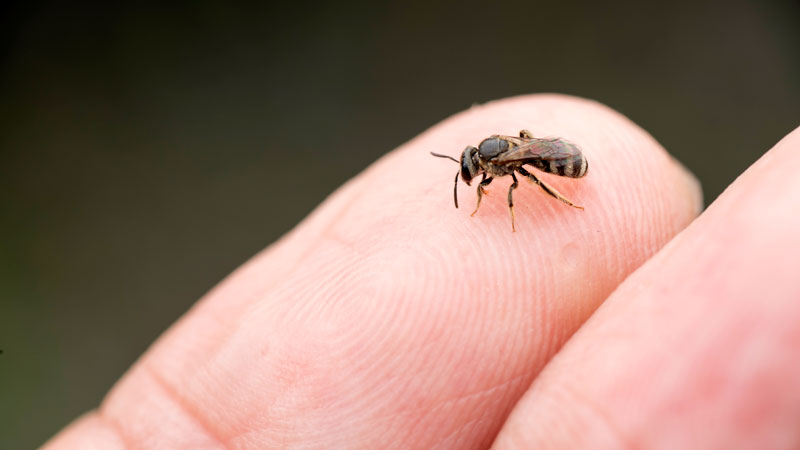

 Just tell me how to get rid of ’em.
Just tell me how to get rid of ’em.
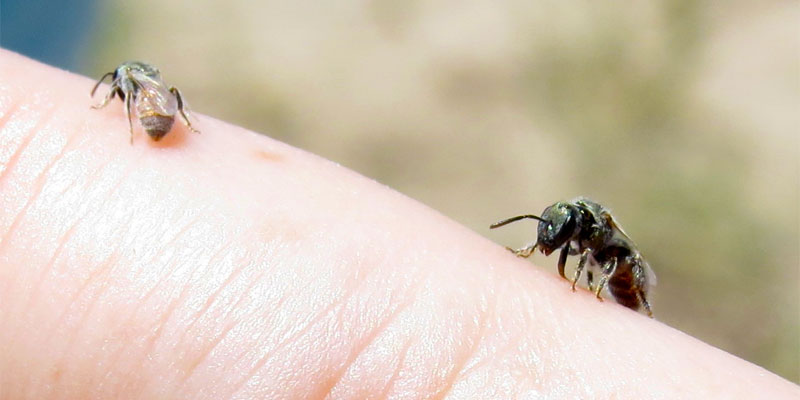
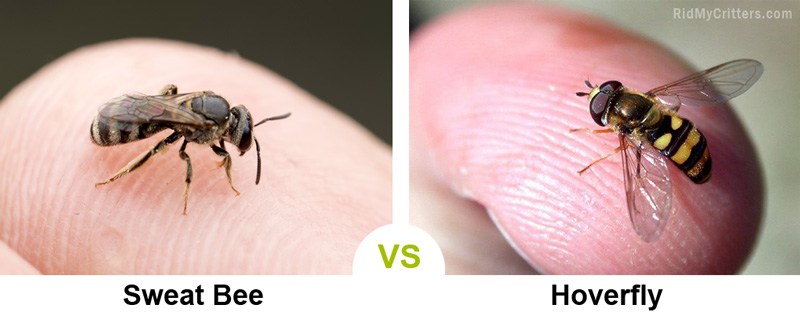
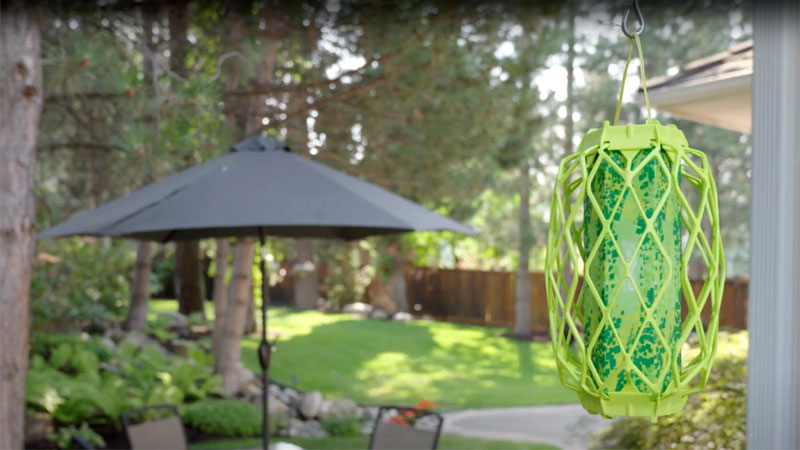
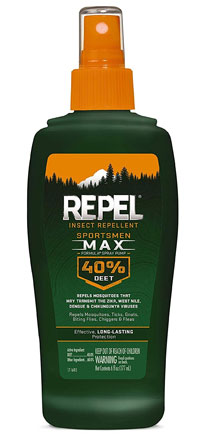 Commercial Repellent
Commercial Repellent
I would like to just move the nest to a more suitable (for me) location. Do they die off/hibernate in the winter and can I dig them up and put them somewhere else? They are in a pile of leaves that I was saving for leaf mulch 2 feet from my compost heap. I have gotten stung a couple of times working in that area.
Can I redirect their entrance with a large diameter pipe to the other side of a fence so that I am not at their front door?